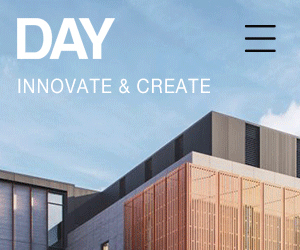The UK’s population is growing and is projected to reach 73.3 million by 2036.
Alongside this growth, improvements in healthcare and lifestyles mean we are living longer.
Modern diagnostic technology can help healthcare providers improve operational efficiency by providing better, more-efficient and accurate treatment for their patients
In 2016, 18% of people were aged 65 and over, and this is expected to rise to 23.9% by 2036.
As a consequence, more people are living with long-term chronic conditions such as diabetes, heart disease and dementia, putting pressure on the healthcare system.
The cost implications of caring for an ageing population are significant.
The average 65 year old costs the NHS two-and-a-half times more than the average 30-year old; and an 85-year old costs more than five times as much.
Additionally, there is an acute healthcare staffing shortage with the NHS in England short of 42,000 nurses, midwives, and therapists.
Modern diagnostic technology can help healthcare providers improve operational efficiency by providing better, more-efficient and accurate treatment for their patients.
Advances in nuclear medicine imaging, for example, have led to improvements in the detection and identification of age-related conditions such as cancer, dementia, heart disease and other diseases, which enables treatment at a stage when it is often simpler, more effective, less costly, and less invasive.
Cutting-edge technologies are currently in development that will directly impact the way healthcare organisations conduct research and diagnose illness.
Financing arrangements have the potential to incorporate other costs such as installation, as well as introduce the flexibility of future affordable technology upgrades in line with technology developments
For example, super-magnet imaging will have a particular impact on oncology and neurology research.
The use of up-to-date machines enables healthcare staff to diagnose more patients earlier and with more accuracy, as well as provide more-targeted treatments, with fewer and less-severe side effects and higher treatment success rates.
Smart software developments are also appearing on the market ,which allow rapid set-up change so that research imaging happens at night while therapeutic diagnostics operates through the same unit during daytime patient hours.
Despite the obvious advantages of these technological innovations, keeping pace with such advancements requires considerable capital expenditure. And, in times of squeezed budgets, acquiring the latest technology may seem out of reach for many healthcare providers.
As a result, specialist technology finance solutions such as transition finance, technology upgrade and pay-for-outcomes options are gaining increasing acceptance as a means of enabling cost-effective investments in new technologies.
Such financing solutions spread the cost of the technology over an agreed financing period, with finance payments arranged to align with the expected benefits of the use of the technology over time, such as improved operational efficiency.
Leasing arrangements remove the need for a large initial outlay and can help improve cash flow and working capital. Additionally, financing arrangements have the potential to incorporate other costs such as installation, as well as introduce the flexibility of future affordable technology upgrades in line with technology developments.
Healthcare providers can thereby deploy precious funds in other areas to improve service quality while keeping their lines of credit intact.
Such tailored financing packages tend to be offered by specialist healthcare financiers that have an indepth understanding of medical technology and its applications.
By choosing to work with a specialist provider of asset finance for the installation or upgrade of their diagnostic technology, healthcare organisations can take important steps to providing appropriate healthcare for an ageing population in a sector facing tight budgets and staff shortages
They understand the profound impact up-to-date technology can bring to the daily operations and can expertly evaluate any associated risks. They are, therefore, more inclined and more able to create customised financing packages that fit the specific requirements of each individual organisation – for instance, by flexing the financing period to suit the customer’s cash flow needs. This contrasts with the standard financing terms usually available from generalist financiers who often lack technical expertise or a thorough understanding of the healthcare sector.
Siemens Financial Services, for example, provides cost-effective financing solutions for a wide variety of medical equipment, enabling healthcare organisations to acquire the solutions they need without having to commit precious capital budgets.
The collaborative work between SFS and Siemens Healthineers provides perhaps the best illustration of the sheer range of integrated financing solutions available from specialist providers in today’s marketplace.
This range of solutions includes SFS’s flexible leasing arrangements, enabling the acquisition of particular equipment, through to enterprise-wide arrangements where Siemens Healthineers provides data-driven consultancy to drive sustainable improvement, enabling technology, training, maintenance and support, technical staff, even facility design and associated building works – all wrapped up into a single, transparent annual charge.
This approach reflects the developing trend in healthcare towards outcomes-based medicine, expanding access to precision medicine, transforming care delivery, and improving patient experiences, all enabled through digitalised healthcare technology.
By choosing to work with a specialist provider of asset finance for the installation or upgrade of their diagnostic technology, healthcare organisations can take important steps to providing appropriate healthcare for an ageing population in a sector facing tight budgets and staff shortages.




